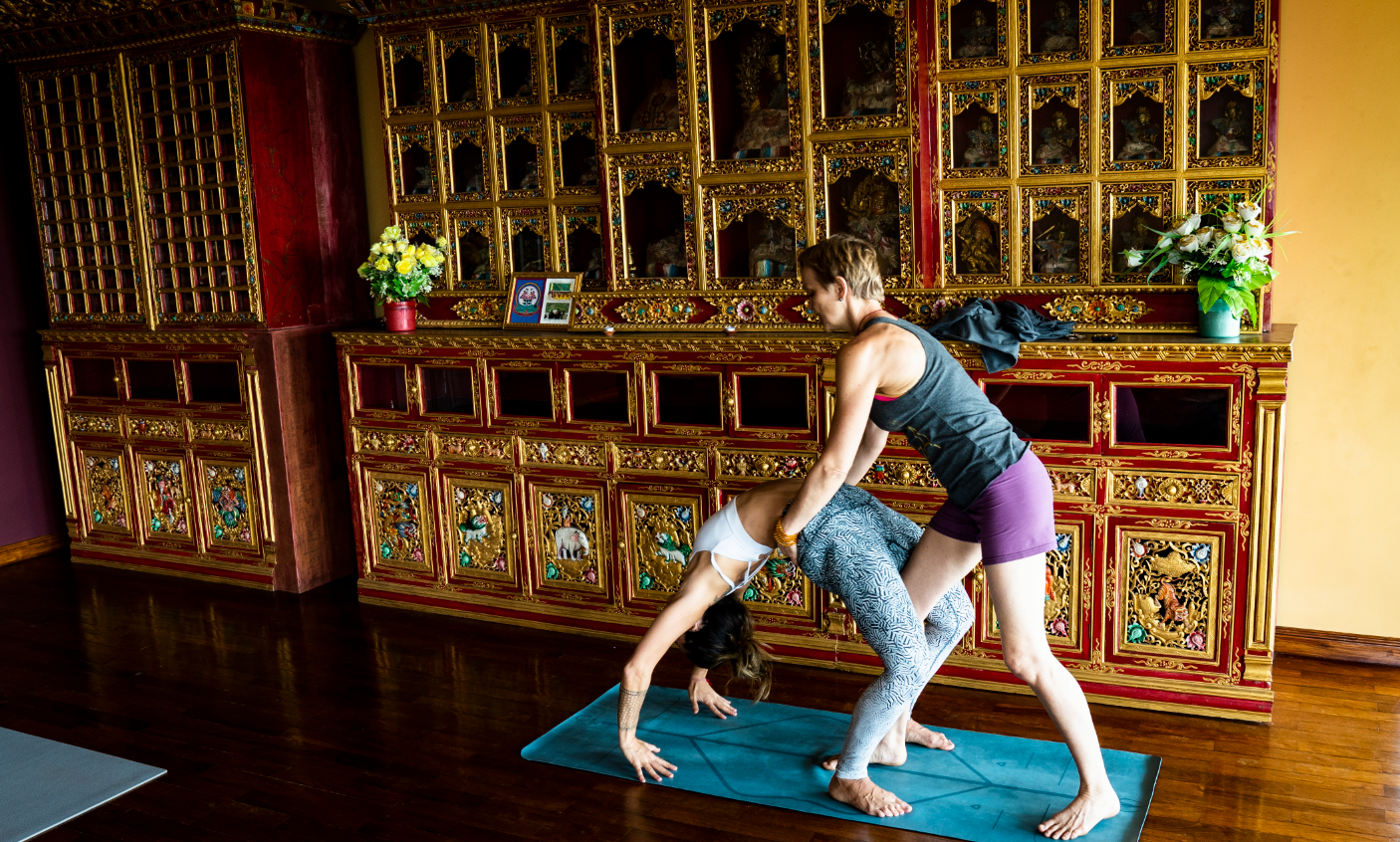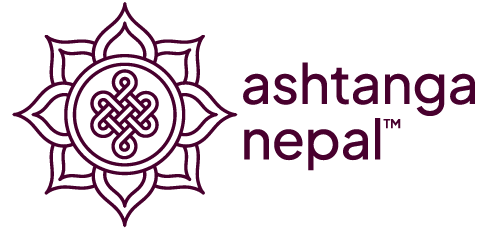I have worked with the body my whole life, I have been an Ashtanga practitioner for more than 30 years, and before that I was a professional dancer. At first this process was about discipline. I didn’t´t dance or do yoga because i loved it but rather because i needed some sense of center and alignment in my life. Later this work became much more rich and subtle:

I studied somatic practices during my dance training in Holland. This kind of training is all about accessing the body without taking over control. We are rather working with the forces that are there; gravity and lightness, speed and momentum, – in order to create movement. These embodiment practices does, like meditation, take your focus away from the trains of thought that we are often so hung up in and teach you to sense inwardly to be present with what is. You learn to separate awareness (inner spaciousness) and its content (feelings, sense impressions, thoughts etc.) and you make choices about when to react to the impulses thay trigger – or not to. (This, in a nutshell is also dance improvisation, which I was very fond of).
Since movement was my way into awareness, I thought that leading a life that did not in some way include embodiment practices i.e., was unthinkable. For this reason i didn´t believe in Buddhism as a method. I thought, like many people do, that Buddhism was all about sitting still in meditation and yoga was all about moving your body.
Then, one year I met an American Buddhist nun in Mysore and I started studying the Diamonc Cutter Sutra with her. I immediately felt that this text aligned very well with how I perceived the world. Moreover, Buddhism had so many practices to offer: it seemed to work on the heart and the emotions offering very direct paths to cut through our habitual preferences and dislikes. I loved that Buddhism was so radical. I thought that being a Buddhist was much like an artistic endavour: you attempt to live and act with integrity, upholding a world view that goes against mundane values of pleasure, gain, fame and reputation, and you deliberately choose integrity over gain, compassion over revenge and wisdom over self-righteousness.
This inspired me to go and live in a monastery for three years. Staying in a monastery meant to experience what life might be like when a whole group of people live according to the view of Buddhism and choose to engage with its practices. The most memorable experience, I thought was that of the Passing of the abbott oof the monastery, Penor Rinpoche. For almost a week he sat in deep meditation without any vital signs. There was an amazing atmosphere pervadieng the entire monastery ground. Life and death is really one continuour process within Buddhism and it gives do much more richness and meanng to our lives to see it that way!
After I took up academic study of Buddhism i started to wonder why Buddhism and Yoga are traditionally regarded as separate traditions when clearly, they have so much in common and origins within the same cultural area:
To clarify: yoga in the sense of “classical Yoga” contained as one of the six philosophical systems of India, holds Patanjali´s yoga sutras (5th century BC) as their foundational text. This text is really a compilation of methods with which to train the mind. It has many shared notions with Buddhist Abhidharma from the same era, speaking about Dhyana meditation, and various stages of realization etc. The hallmatk of Yoga and Buddhism is that insight comes as direct perception, not mundane perception, like we have, but through supramundane yogic perception, which is only acheivable through practice.
Yoga in the (tantric) sense of Hatha Yoga, from around the 8th century BC, takes into account the body using the winds and channels of the subtle body to transcend mundane existence. This is widely practiced within Tantric Buddhism as we find in the Tibetan tradition.
Both the techniques of “Classical yoga” and Hatha yoga are shared between Buddhism and the Hindu traditions. One scholar has termed “Yoga” as a “free software” that was shared between many traditions: Buddhist Brahmanical, Muslim and Jain schoools” the difference lies in how and for what purpouse these schools engage in the practices. Within Buddhism it was done with the intention to free all beings from suffering. The sublte winds in the body becomes linked to bodhicitta flowing in the subtle body.
The Buddhist teachers with whom I feel the most connection are those who emphasize embodied practices. A teacher who brings it all together for me is Ven. Dhammadipa. Dhammdipa is a life long practitioner of several buddhist paths, Therevada, Yogachara and Zen. listening to him the texts become alive as they are not just words but actually stages of insight that you realize within your own mind and body. For me he represents a constant reminder of what is possible to do within your own mind and body. He is a real master of the art of meditation.
My other teacher is Dolpo Tulku Rinpoche, whom i have known for a long time Bot teachers practice physical yoga, Dhammadipa Chi Gong and chinese medicine, Dolpo Tulku teaches yoga and pranayama, a synthesis of Tibetan and Indian traditions, as a preliminary to Tantric practices.
In my In Dept YTT course I seek to mend the conceptual gap between Buddhism on one side and Yoga on the other. I think it is time we regard yoga in a much wider sense as a shared tradition, and more yoga teachers than me want to include the Altruistic view of Buddhism in their teaching. One of the foundational practices we do is compassion meditation. This practice emphasizes the context for meditation; the lineages of love and support that aid our spiritual practice. We take into account that we as humans are primarily relational beings, existing within a network of mutual care. What want students to take away from the course is the direct experience of “we” as opposed to a truly existing “self” and to let this motivate their teaching and practice.
What i want my students to undestand is that we become what we are through processes, consciously or unconsciously. (Mostly we do this unconsciously through cultural and social conditioning.) Yoga is the path to overcome this conditioning, mentally and physically. if we train ourselves to see the world differently, this, affects our perception. This affects how we move and act;
Do we perceive ourselves as a fixed entity or as a process pervaded by everything and everyone around us? there are limitless possibilities and yoga teaches you to steer our process of becoming towards the most optimal purpouse. For this we need both a deep understanding of the foundation of yoga and the practices to actualze it!
